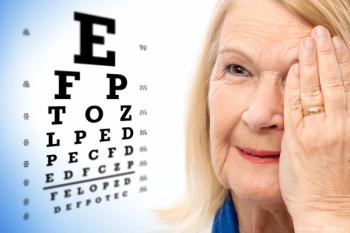
Novel device reliably measures iridocorneal angles
Scheimpflug photography using a novel device (Sirius, Costruzione Strumenti Oftalmici) provides consistent measurements of the iridocorneal angle at different meridians in healthy eyes and could be used to detect occludable angles.
Scheimpflug photography using a novel device (Sirius, Costruzione Strumenti Oftalmici) provides consistent measurements of the iridocorneal angle at different meridians in healthy eyes and could be used to detect occludable angles, according to Dra. Clara Ruiz-Belda, Vithas Medimar International Hospital, Alicante, Spain, and colleagues.
The researchers published the finding in
Innovations, such as minimally invasive glaucoma surgery and selective laser trabeculoplasty, have made measurement of the iridocorneal angle increasingly important in treating glaucoma. It is also an important consideration in implantation of an angle-supported phakic IOL.
Gonioscopy, the gold standard for measurement of the iridocorneal angle, requires practice and can be time-consuming.
The Sirius system-a non-contact 3D rotating Scheimpflug camera combined with a Placido ring-provides another alternative for anatomical measurements of the anterior segment. But scant research has explored the system’s consistency and repeatability in measuring the anterior segment, some researchers have noted.
To fill that gap, Dra. Ruiz-Belda and colleagues recruited 43 patients ranging in age from 36 to 79 years and measured one eye in each patient. The researchers selected the patients at random from anterior segment consultation at the Department of Ophthalmology of the Vithas Medimar International Hospital.
All the eyes in the study were healthy and had a refraction error between +5.00 D and -10.00 D. The researchers excluded patients who had undergone ocular surgery, or had glaucoma or another active ocular disease.
A single experienced examiner analyzed the corneal topography and anterior segment of one eye in each patient with the device. He measured nasal and temporal angles at 0°, ±10°, ±20°, and ±30° meridians a total of three times in each eye.
The researchers then calculated the within-subject standard deviation (Sw) as a way of estimating the size of measurement error. They defined intra-observer precision as ±1.96 x Sw, indicating the range of error size of the repeated measurements for 95% of observations. They found that the Sw was below 3.50° in all cases.
They also calculated the coefficient of variation (CV), as a way of estimating the extent of variability in relation to the mean of the population. The coefficient of variation is the ratio of the standard deviation to the mean. A CV of 0% means there is no variability in relation to the mean. In this sample, the CV ranged from 1.36% to 10.92%.
They also calculated the intraclass correlation coefficient (ICC) as a way of estimating the relative homogeneity within groups in proportion to the total variation.
The ICC approaches 1.0 when there is no variance within repeated measurements, indicating that the total variation in measurements is due solely to variability in the parameter being measured. The lowest ICC was for the nasal angles for 30° over the horizontal: 0.778. The other angle measurements had associated ICCs ranging from 0.865 to 0.981.
When the researchers compared nasal and temporal angle measurement for the same meridians, they found statistically significant (P < 0.001) differences. Similarly, all Sw values for temporal angle measurements at each meridian were significantly lower than for nasal angles. The researchers found lower values for intra-observer repeatability for temporal versus nasal measurements as well.
One explanation is that Scheimpflug imaging cannot properly characterize a non-transparent cornea and may have some limitation in measuring peripheral zones, the researchers wrote.
Also, the increased light scattering due to a marked arcus senilis in some cases may have results in the poorer consistency of more peripheral superior nasal angle measurements. The eyelid, supercilium, or nose shadow might interfere with the angle measurements in the superior nasal sector.
The researchers found moderate but statistically significant correlations between nasal angle measurements at 30° (r=-0.533) and 20° (r = -0.527) (P <0.001).
The Sw values for nasal measurements at 30° and 20° were lower than values reported by other authors for iridocorneal angle measurements, even using the same device.
The researchers also evaluated the results according to age and gender. They found poor but significant inverse correlations between age and most of the mean angle measurements: The younger the patient, the wider the angle measurement.
“This confirms age as a factor influencing the iridocorneal angle,” the researchers wrote. “The increase in crystalline lens volume with age seems to be crucial in this finding.”
They speculated that the glaucoma mode evaluated in the study might prove useful for a quantitative evaluation of age-related changes in angle structure in healthy eyes. However, age did not prove to be relevant in the measurement of consistency.
The researchers also found statistically significant differences between men and women in nasal angle measurements at three different medians, a finding noted by other authors. Age also did not affect consistency.
“The glaucoma mode evaluated was able to provide consistent measurements of iridocorneal angle measurements at different nasal and temporal meridians,” the researchers concluded.
Newsletter
Get the essential updates shaping the future of pharma manufacturing and compliance—subscribe today to Pharmaceutical Technology and never miss a breakthrough.













































